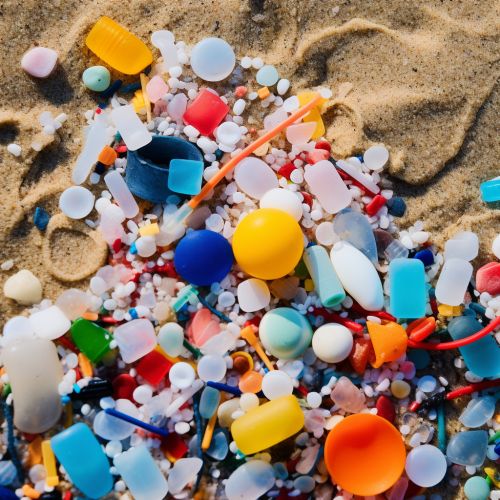The Hazards of Microplastics
Introduction
Microplastics are small plastic particles in the environment that are generally smaller than 1 mm (0.039 in) down to the micrometre range. They can come from a variety of sources, including cosmetics, clothing, and industrial processes. Two classifications of microplastics currently exist: primary microplastics are manufactured and are a direct result of human material and product use, and secondary microplastics are microscopic plastic fragments derived from the breakdown of larger plastic debris. Both types are recognized to persist in the environment at high levels, particularly in aquatic and marine ecosystems. Because plastics do not break down for many years, they can be ingested and incorporated into and accumulated in the bodies and tissues of many organisms. The entire cycle and movement of microplastics in the environment is not yet known, but research is currently underway to investigate this issue.
Sources of Microplastics
Microplastics can come from a range of sources. According to a report by the International Union for Conservation of Nature (IUCN), around 30% of the global release of primary microplastics to the world's oceans comes from the washing of textiles, while another significant source is the abrasion of tires while driving. Other sources include city dust, marine coatings, road markings, personal care products, and plastic pellets. Secondary microplastics, on the other hand, are the result of larger plastic items gradually breaking down into smaller pieces through the processes of photodegradation and mechanical erosion.


Hazards of Microplastics
Microplastics pose a significant threat to the environment and to human health. They can be ingested by a wide range of marine and terrestrial organisms and have been found in a variety of species, from small plankton to large mammals. Once ingested, they can cause physical harm, such as internal abrasion, or chemical harm, as they can carry persistent organic pollutants.
Microplastics also pose a potential threat to human health. They have been found in a variety of food and beverage products, including seafood, honey, and even beer. It is currently unclear what effect ingestion of these particles has on human health, but it is a topic of ongoing research.
Mitigation and Prevention
There are several ways to mitigate and prevent the release of microplastics into the environment. These include improving waste management systems, promoting and incentivizing the use of natural and biodegradable materials, and reducing the use of plastic products. Research is also being conducted into the development of biodegradable plastics that can break down more quickly and safely in the environment.
